 On a recent chilly Sunday women started disappearing from ads, magazine covers, billboards and posters directing readers to Not-There.org. Part of a powerful ad campaign to raise awareness of gender inequality, it was a graphic reminder to women “we’re not there yet.”
On a recent chilly Sunday women started disappearing from ads, magazine covers, billboards and posters directing readers to Not-There.org. Part of a powerful ad campaign to raise awareness of gender inequality, it was a graphic reminder to women “we’re not there yet.”
It’s a déjà vu for the real housewives of the cold war.
70 years ago images of working women suddenly disappeared from the media and it took them over 30 years to return.
During WWII women might have thought that they were finally there…until they weren’t.
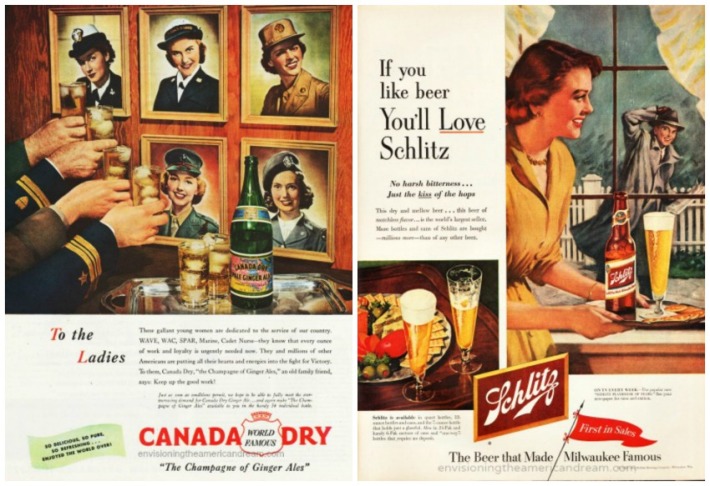
Women went from serving the country to serving hubby a beer. L) Vintage ad Canada Drive 1944 (R) Vintage Schlitz Ad 1953
One day, dedicated working women were glorified, proudly featured in articles and advertisements; the next they vanished, replaced by dewy-eyed brides, and happy homemakers with nothing more taxing on their minds then getting rid of ring around the collar.
In a blink of an eye women went from serving the country to serving hubby a beer.
But this wasn’t a campaign to raise awareness. It was a tactical decision.
Most of these women didn’t opt out of working; it was more like they were pushed out by Uncle Sam: “Here’s your pill box hat. What’s your hurry!”
As fierce as Uncle Sam’s Rosie the Riveter campaign was (deployed in WWII to recruit women into the depleted work force) once victory was in view a decidedly different, equally aggressive, operation was launched aimed at these same women.

Women transitioned from working woman to homemaker with push buttons ease. (L) Woman war worker -Vintage ad General Electric 1943 (R) Housewife vintage ad
Not unlike like the post war US defense policy, the media went on a permanent war footing against positive portrayals of women in the workplace.
It was now all out war to get the ladies back into their soon to be fully-loaded Kelvinator kitchens and into high heels.
It would be more than a decade until this secret campaign would reveal itself: “Operation: June Cleaver” would be a huge success!
My mother Betty along with millions of other women of the greatest generation would be one of it’s casualties.
All Out War
It was wartime.
The patriotism was so thick you could cut it with a knife. Everywhere you looked, posters, ads and articles appeared applauding the resourcefulness and ingenuity of Americas working woman, that patriotic lass who had stepped up to fill the shoes of the boys who had gone off to war.
No effort was spared to get these ladies out of their homes and into the defense plants.
The campaign orchestrated by Uncle Sam’s Office of War Information in collaboration with Madison Avenue, women’s magazines, radio producers and Hollywood, tried overnight to make wearing overalls and operating a lathe glamorous.
When Uncle Sam came calling, these ladies “leaned in” and took over the man power.
Working girls were the new glamor girls and for impressionable teens like my mother Betty it was empowering.
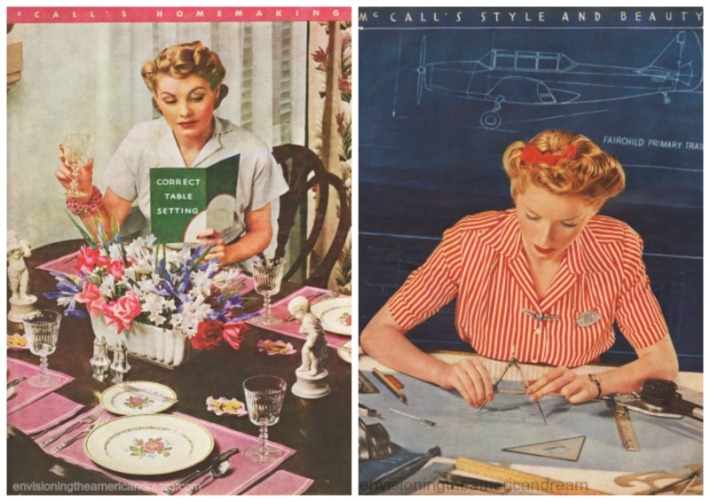
What a difference a year makes. McCalls Magazine went from table setting tips pictured on the left 1941, to a war worker plotting her blueprint for a bomber on the right, 1942. Women were no longer pictured as weak, non mechanical incapable of leadership or unsuited for the challenges of the world.“The day of the lady loafer is almost over.” boasted Margaret Hickey chairperson of the Women’s Advisory Committee to the War Manpower Commission
With the bombing of Pearl Harbor, our very notion of woman’s place was decimated.
A public more accustomed to seeing their women depicted in dainty dresses while luxing the family dishes, were now being bombarded with images of hardy gals dressed in coveralls and bright bandanas doing a mans job
There was nothing a woman couldn’t do and the media couldn’t stop gushing about her.
You’re No Sissy Now!
Typical of these positive ads was one from Kotex. Geared to high school girls like my mother, it typified the wartime emphasis on female strength: “Remember when the boys used to say that girls were made of sugar and spice and all things nice? Those days are gone forever…you’re no sissy now!…”
Talk about girl power!
For a 16-year-old girl it was all thrilling . All around Betty were wives mothers and older women actively engaged in non traditional work; women who had a feeling of accomplishment proud to be part of the war effort. These jobs gave them confidence and a new sense of their capabilities.
Betty Co-ed

(L) Vintage Illustration 1948 by Harry Fredman “Women’s Home Companion” (R) Vintage Brenda Starr Comic Book 1940s
By the fall of 1945 Betty was a college freshman who took her studies seriously.
As editor of Erasmus High School newspaper she had dreams of being a star reporter for a big city daily. But no sob sister stories for her- she didn’t want to get stuck covering the usual girl beat of weddings and social clubs.
No sir, she fancied herself more as a glamorous foreign correspondent type like Martha Gellhorn one of the greatest war correspondents of the twentieth century and the only woman to land at Normandy on D Day. Married to Ernest Hemingway they traveled the front lines together.
Perhaps, Betty pondered, one day she might even report from the front lines standing by her beau Stanley a Marine serving overseas.
A Fellah Needs a Girl
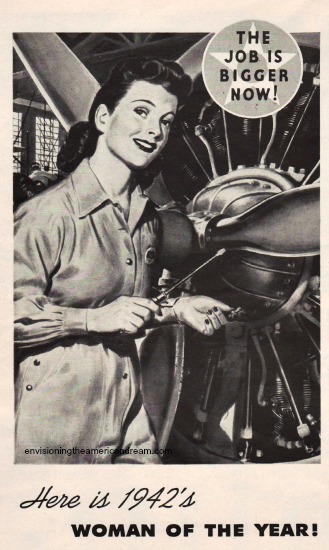
“Hats off to the Woman of the Year” begins this 1942 ad from Mutual Life Insurance, lavishing praise on Americas working woman.
Our fighting boys were proud of these women.
Throughout the war, the armed forces newspaper, The Stars and Stripes had been bursting with pride with uplifting, home-front stories of the swell of patriotic cuties in blue overalls and hair bandanas, standing shoulder to shoulder with their men, taking up the load for Uncle Sam.
But as the war drew to a close, Uncle Sam started whistling a different tune, as in a widely circulated War Dept. brochure proclaiming that : “A woman is merely a substitute, like using plastic instead of metal.”
Fueled by fears there wouldn’t be enough jobs for returning servicemen and that Depression conditions might return, the campaign to get women out of the workforce began in earnest. That, coupled with pent-up desires of both women and men to start a family were unleashed, producing an unprecedented idealization of the nuclear family.
The ideal of the family served as a national unifier becoming a symbol of what the American system was all about. It’s what they were fighting for.
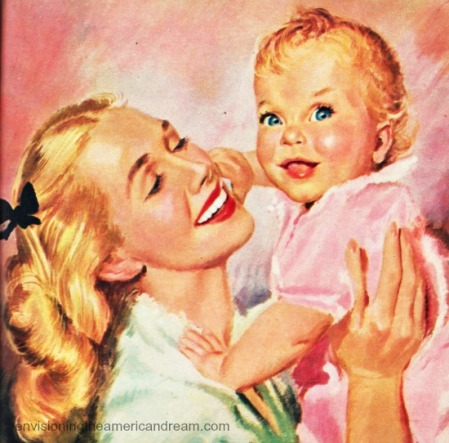
Motherhood and the proliferation of baby images were churned out from 1944-1946. Women were about to be enshrined as wives and mothers .
With the same secrecy of the Potsdam conference, a final meeting between Uncle Sam and his media allies commenced to clarify “the post war administration of women” and the rebuilding of the American family.
Those same glowing home front stories, now took a more scolding tone accusing these same patriotic girls of doing “unwomanly” jobs and taking jobs away from the returning men.
The Way We Were
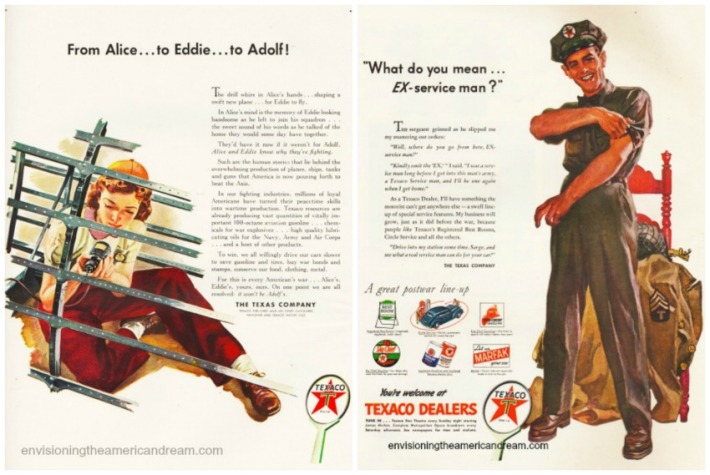
GI Joe gets his job back ((L) Vintage Texaco ad praising the working woman 1943 . R) Texaco ad 1945 “I’ll be a Texaco service man again when I get home.”
Articles and advertisements began to appear, that seemed to speak directly to the battle fatigued boys overseas. One ad for instance featured a soldier in combat wistfully daydreaming about the peaceful world he has left behind, yearning for the familiarity of home: “I want my girl back just as she is.”
The media assured the boys the American Dream would be there when they returned, that “life would be just as you left it.”
Including your job…and your best girl.
Blue Print For The American Dream
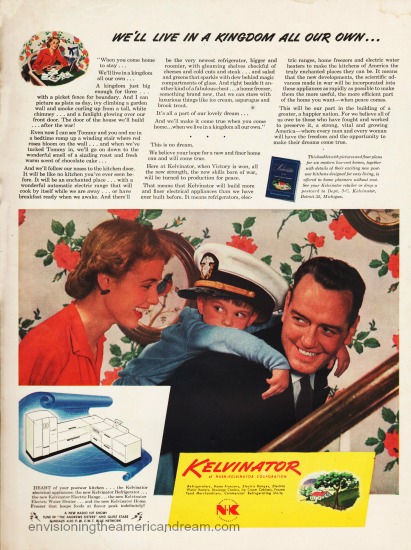
“… Yes these were the things I was fighting for, waiting for…the soldier asserts.” Vintage ad Kelvinator 1945
No series of advertisements served up a bigger helping of the post war American Dream than the brashly sentimental ads of Nash-Kelvinator.
The ads took on the tone of a letter often written by the hometown gal he left behind who had plenty to dream about too.
In this ad from 1945 the soldier pleads that once he comes home:
“…don’t let anyone tamper with a way of living that works so well.”
“Never fear darling,” – his sweetheart writes him back, that’s the way we all want it. Everything will be here, just as you left it, just as you want it…when you come back to me!
And when you come back from the war you will find, just as you left them, everything your letters tell me you hold dear.
….inside in the living room you’ll find your easy chair, your footstool and your slippers, just as they always were each night before you went away to war.
When you come back you will find nothing changed. Those at home promised that. Here in your town your children are still free to sleep and laugh and play…still free to look at the sky, clear-eyed and unafraid…our house still stands lovely as it always was…
“…Yes, back home to the same town to the same job , you liked so much…to the same America we have always known and loved…where you can work and plan and build…where together we can do things we’ve always dreamed of…where we and our children are free to make our lives what we want them to be…where there is no limits…
…where nothing has changed.
And We’ll Live Happily Every After
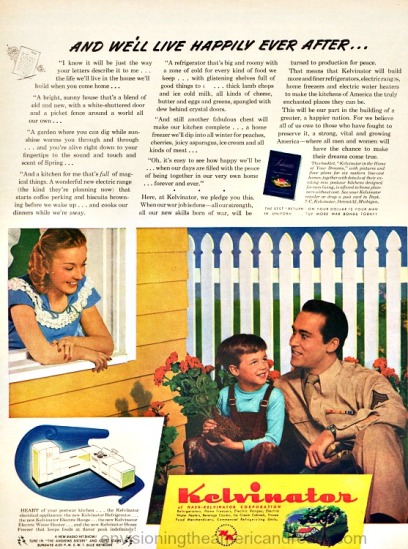
”You’ve said, That’s the America I want when I come home again. Ads promised GI Joe that His wife and son will make life what it ought to be once more.
“That’s the America I fought for…that’s the America I’ll be looking for when I come home.”
The way things were.
But the fairy tale American Dream didn’t include working woman.
I Want My Girl Back Just As She Is
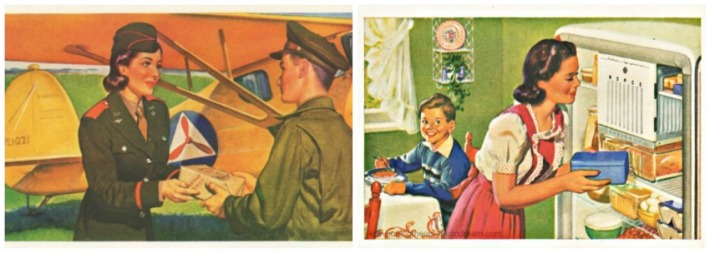 Overseas, Betty’s beau Stanley worried.
Overseas, Betty’s beau Stanley worried.
With Victory in Europe nearing, Seargent First Class Stanley began to echo his GI buddies concerns: “Exactly what was getting into these dames anyway?”
Looking longingly at the pin-up of Betty Grable on his Barracks locker, he began to question what the heck they were fightin’ for if all the girls back home had their heads filled with a lot of hot air and plain baloney.
Would the women be willing to return to the home after the war, they worried in unison.
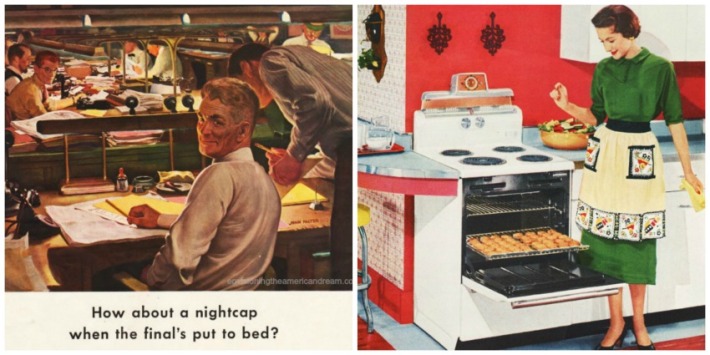
Even Hemingway was resentful of his glamorous wife Martha Gellhorn’s long absences during her reporting assignments. He famously wrote her “Are you a war correspondent or a wife in my bed? Needless to say They divorced in 1945
Stanley thought about Betty away from home, at college susceptible to all kinds of ideas and nonsense.
He knew she had her heart set on being an ace reporter, solving mysteries and having fabulous adventures. But he didn’t really want her globetrotting around the world in search of sensational stories, not to mention the steamy romances.
And even if Betty did stay at home in N.Y. and get that job as a reporter for a daily paper, he still worried.
Newsrooms were he-man territory. They were smoked filled, grubby joints with spittoons on the floor and racy pin ups on the wall.
He imagined her going out after work with the boys, downing whiskey at some smoky watering hole, staying out late betting on some palooka. This Sergeant First Class didn’t want his wife shouting at boxing matches when she should be home darning his socks and cooking a casserole for him. …and taking care of the children.
Back Home For Keeps
Stanley was right. Back at school Betty’s head was being filled with all kinds of ideas and nonsense. But not what he feared.
Operation June Cleaver had begun on the homefromt .
Suddenly it seemed, wherever you turned a fierce campaign was being launched with ominous warnings aimed at the modern women.
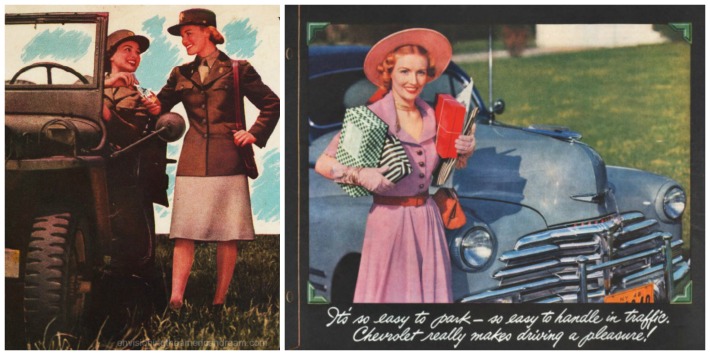
It was now important to keep your man in the drivers seat. It was soon feared that the masculinization of career women would drive him away.
The women’s magazines once filled with glowing stories of courageous women were now filled with threatening articles implying that careers and higher education were leading to the masculinization of women with dangerous consequences to the country, the home, the children.
If a woman held an important professional position, they implied, she would lose her womanly qualities affecting the ability of the women as well as her husband to obtain sexual gratification!
And if a career woman had children, watch out.
She turned them into “juvenile delinquents,” “criminals” and “confirmed alcoholics.”
Or worse…she could end up an old maid.
The Tide had Turned
With victory the tide had turned against working women.
Gone were the ads telling women they could do anything a man could do. Gone were the ads congratulating women for performing double duty on the homefront so brilliantly.
Instead ads began appeared affirming the new conventional wisdom – there was no more important job than wife and mother.
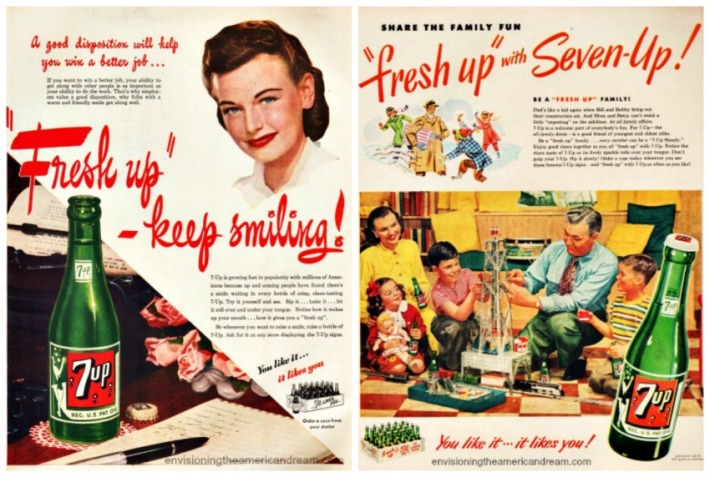
7-UP ads ceased claiming it would produce a good disposition in women in order to win a better job as the ad on the left proclaims, to boasting the beverage would help them be happy homemakers and bring good family cheer.
Up In smoke
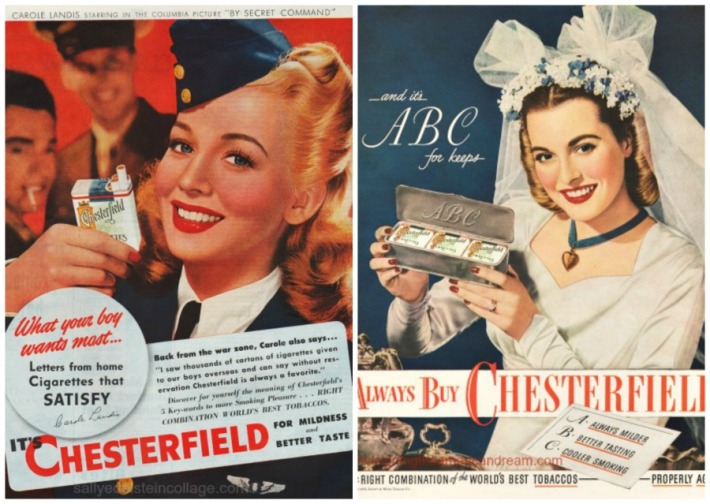
Womens aspiration would soon go up in smoke. During the war Chesterfield had frequent ad supporting military recruitment and factory work. By 1946 they featured a bride.
Nuclear Family
The ideal of the family served as a national unifier becoming a symbol of what the American system was all about.
It’s what they were fighting for.
After Rosie the Riveter finished her stint on the assembly line, Uncle Sam wanted her to keep up the same wartime production…only this time, in bed.
Family was about to go nuclear.
Ashamed at even thinking of being a career girl, Betty worried not only had she lost femininity, but whether Stanley would leave her when he returned?
Betty felt so dull and droopy. Now all she could dream about was marriage and a warm and cozy home together, just like she and Stanley talked about.
With Victory here all thoughts turned to the future.
Post War Promises: Occupation:Wife
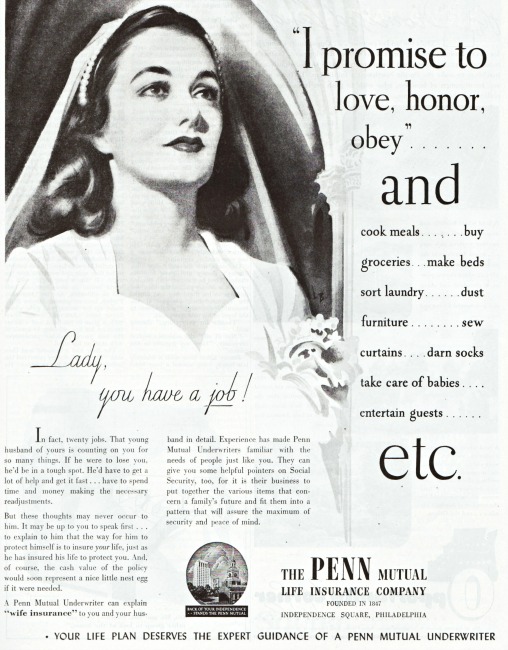
There was no more important job than being a wife and mother. So important in fact that in 1946 The Penn Mutual Life Insurance Company offered “wife insurance” in case the poor widowed hubby was left having to cook, clean, shop, do laundry, …etc for himself!
Like many war born romances Betty’s relationship with Stanley soon fizzled out.
But in the fall of 1945 with a post war bounce in her step, Betty returned to school more determined than ever to excel, clear in the things that were really important.
She came to the realization that the highest value and only real worthwhile commitment for a woman was the fulfillment of themselves as wives and mothers.
A barrage of books and an onslaught of articles bombarded the media convincing women to stay home. Working women became the target of vehement attacks by academia, industry and politicians. In fact now the conventional wisdom was that women who wanted to continue working outside the home were neurotic.
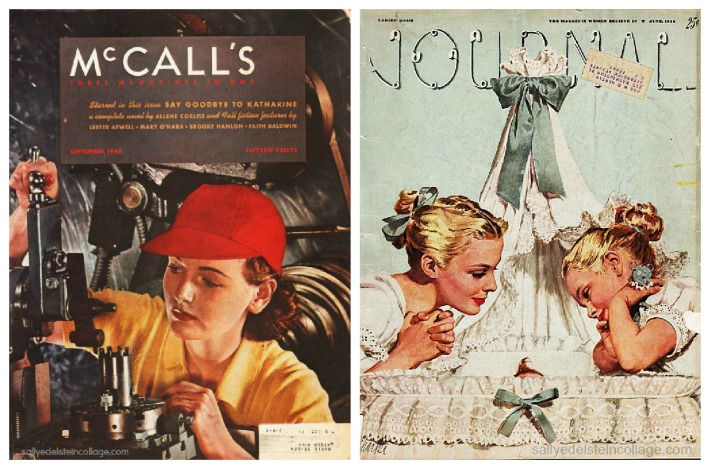
Women’s magazines soon replaced the WWII working girl with a loving Mother who became the reigning cover girl for years, solidifying the only real worthwhile commitment for a woman was the fulfillment of themselves as wives and mothers. L) McCalls Cover 1942, (R) Ladies Home Journal cover 1946 illustration Al Parker
In her Junior year in college a crippling cloud of pessimism had drifted over the fate of the modern American Woman and the American family.
According to a 1947 bestselling book both were in dire danger.
In sociology classes all across the country earnest student like my mother cast aside Margaret Mead and devoted college papers to a dense cerebral book co authored by Marynia Farnham and Ferdinand Lundberg, a shrink and sociologist, called Modern Woman:The Lost Sex.
If there was unhappiness and uncertainty in modern life they wrote, it had a sexual reason: modern woman had denied her femininity and her womanly role.
Only by accepting her place as wife, mother homemaker and by erasing her “masculine aggressive” outside interests would woman be content. Women who avoided this natural state were “neurotically disturbed women”.
Feminism was, “at it’s core, a deep illness.”
Mission Accomplished
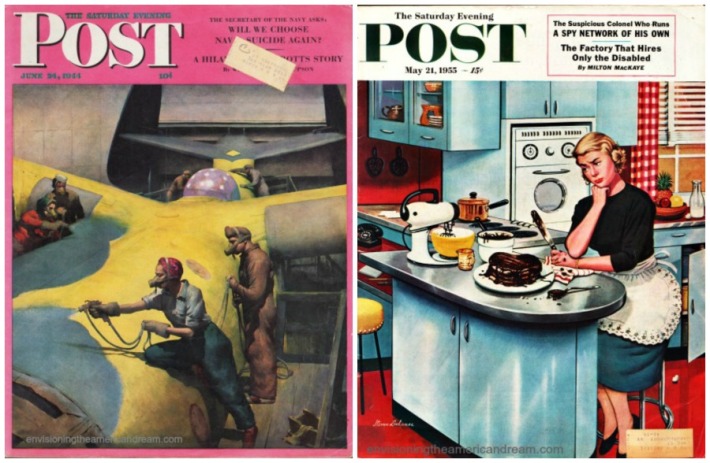
Operation: June Cleaver – Mission Accomplished. (L) Vintage 1944 Saturday Evening Post Cover of Rosie the Riveter illustration by Robert Riggs (R) Vintage 1955 Saturday Evening Cover – illustration by Steve Dohanos
Operation June Cleaver was a success! Mission Accomplished!
During the post war years, the Culture of Containment was not just a foreign policy but applied to women and their identities as much as it did to the Soviets. Women were to contain their aspirations
It would be a long fifteen years before another, young Jewish woman named Betty, would step forward and write about “the problem that has no name.” So for now my mother Betty would follow in the footsteps of yet another Betty, ol’ reliable Betty Crocker, and become the perfect homemaker.
Visit My Shop and Check out the Retro Housewives Collection
Copyright (©) 2015 Sally Edelstein All Rights Reserved
You Might Also Enjoy







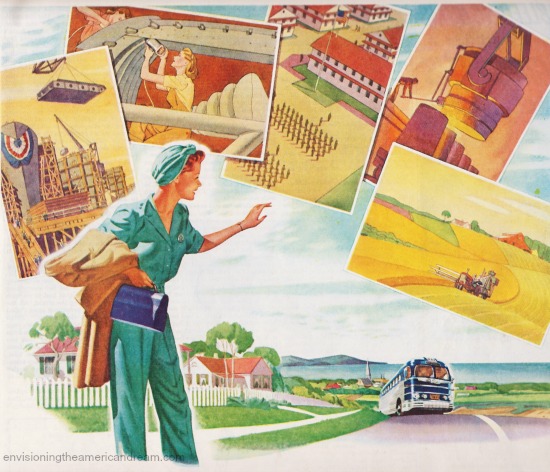

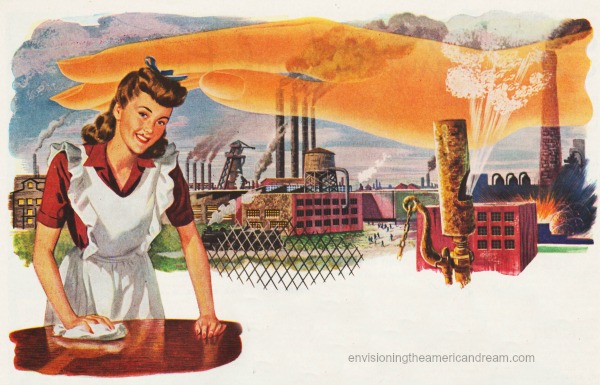

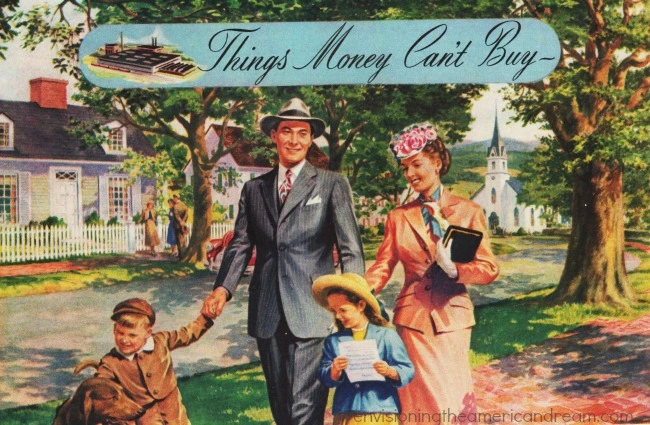
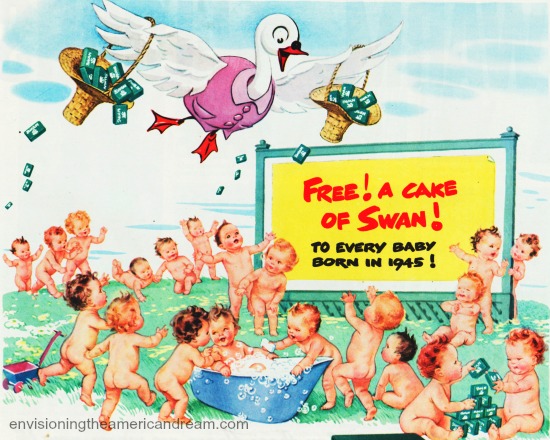
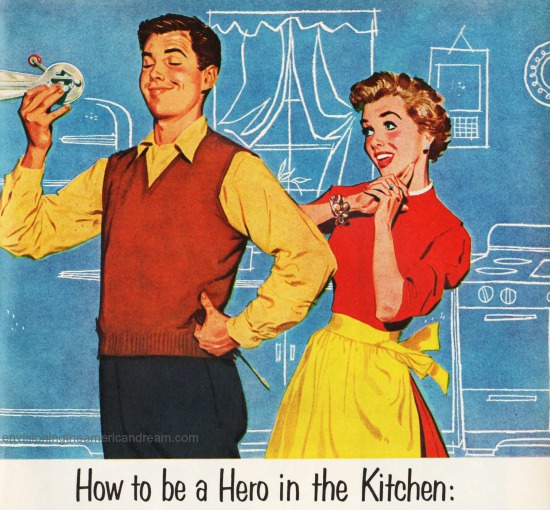
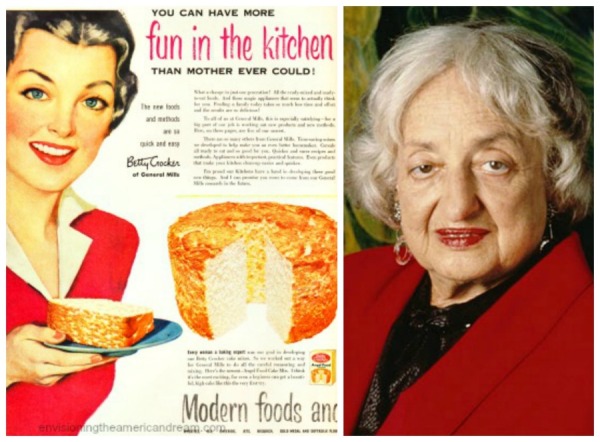





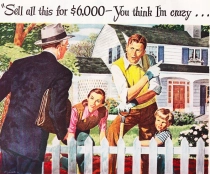
Reblogged this on Rcooley123's Blog.
LikeLike
Thanks for the reblogg!
LikeLike
This is so interesting! The advertisements say so much about our culture’s history. Thanks for posting this!
LikeLiked by 1 person
So glad you enjoyed it. Advertising and illustration are a wonderful source of information. It is what these images tell us about the culture that produced them and the people that consumed them that becomes so illuminating.
LikeLiked by 2 people
That’s so true. It’s an incredible source of information. It’s fascinating to study them and see what was going on in our culture at the time.
LikeLiked by 2 people
I am fortunate to have a vast collection of ephemera spanning over 80 years and it continues to inform and inspire all my work including my art
LikeLiked by 1 person
Reblogged this on Citizens, not serfs.
LikeLike
Pingback: Operation June Cleaver | My BlogThe Philosopher's blog.
Another great visit to those years of yesteryear. I find it really interested that the attack on gender equality continues today. We see it in the Supreme Court. We see it in so-called Conservative politicians in what goes for the Republican party today. We pay millions of dollars to broadcasters Rush Limbaugh to broadcast their misogynist and racist vitriol. And politicians like Rick Santorum who really want to ban all forms of artificial contraception. (You see, he is a conservative Roman Catholic and the Roman Catholic Church’s stand on artificial contraception is that it is sinful.)
LikeLike
Thank you so much for this. I am in advertising and in my years of study determined that this is exactly what happened, post war. Good to see my theory affirmed by another. But now I am even more pissed off.
LikeLike
Seeing it laid out in black and white is disturbing
LikeLike
I love your juxtaposition of the final two Saturday Evening Post covers: on the left, competent women at work; on the right, a woman so incompetent that she can’t bake a cake with a kitchen full of modern equipment. Poor, helpless little thing. Or, maybe, she’s just stuck in the wrong job.
LikeLiked by 1 person
I think those 2 images pretty much sum it up. You can sense “the problem that has no name” is simmering under the surface of that frustrated housewife
LikeLiked by 1 person
Pingback: Women, Weddings and the West
Hmmm … all the people pictured are white.
LikeLike
The ads are representative of the time period when advertising was almost exclusively white.The story is told through one particular lens and was not meant to minimize others experiences.
LikeLiked by 1 person
Yes! It shocked me at first – yet, I am 70 years old (and white) so that was the world I grew up in. Wonderful how the world has changed in that respect.
LikeLike
Pingback: Marriage and Career- You Can Have It All | Envisioning The American Dream
It is very sad for us Good men looking for a Good woman that the June Cleaver type of women are all gone now unfortunately.
LikeLike